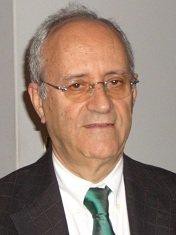abstract
The cerium molybdate nanowires were recently reported as an efficient inhibiting pigment for aluminum alloys. In the present work, the inhibition mechanism of localized corrosion of S-phase intermetallics in AA2024 was studied in detail using a complementary combination of localized and analytical techniques. A significant suppression of dealloying of S-phase was demonstrated in the presence of cerium molybdate nanowires. Microscopic observations dearly show the formation of a conversion layer on the entire alloy surface after immersion in nanowire-containing solutions. A noticeable Volta potential difference (VPD) increase up to around -0.25 V vs Ni reference was measured on alloy after immersion in inhibited solutions. Such VPD changes have been related to the presence of Mo oxides on the alloy surface. Analysis performed by energy-dispersive spectroscopy (EDS) and X-ray photoelectron spectroscopy (XPS) showed that the surface oxide film is mainly composed by Mo(VI) and/or Mo(IV) oxides, and cerium(M) and cerium(IV), and aluminum oxides/hydroxides. A model galvanic couple made of aluminum and copper wires was used to simulate corrosion inhibition processes on S-phase intermetallics and alloy matrix. An enhanced inhibition efficiency of cerium molybdate was observed in electrolytes with higher concentration of sodium chloride. This was associated with the structural transformation of amorphous cerium molybdate nanowires into crystalline (NaCe)(0.5)MoO4 in concentrated NaCl solution, thereby triggering the release of cerium(III). This active feedback release can be used for development of "smart" self-healing coatings with inhibition triggered by the presence of corrosive salts in environment.
keywords
SCANNING KELVIN PROBE; ATOMIC-FORCE MICROSCOPY; ALUMINUM-ALLOY; CHLORIDE SOLUTIONS; LANTHANIDE SALTS; SURFACE-ANALYSIS; IN-SITU; PARTICLES; PROTECTION; AL2CUMG
subject category
Chemistry; Science & Technology - Other Topics; Materials Science
authors
Yasakau, KA; Tedim, J; Montemor, MF; Salak, AN; Zheludkevich, ML; Ferreira, MGS
our authors
Projects
acknowledgements
K.A.Y. thanks for Post-Doctoral grant (ref SFRH/BPD/80754/2011), J.T. thanks FCT for Post-Doctoral grant (ref SFRH/BPD/64335/2009). The authors acknowledge Aleksey Lisenkov for the SEM analysis and Dr. Alexandre Bastos for helpful discussion. MULTIPROTECT (ref NMP3-CT-2005-011783) and FCT (ref PTDC/CTM/65632/2006) projects are acknowledged as well for financial support and INM (Germany) in particular for supply of nanowires.






